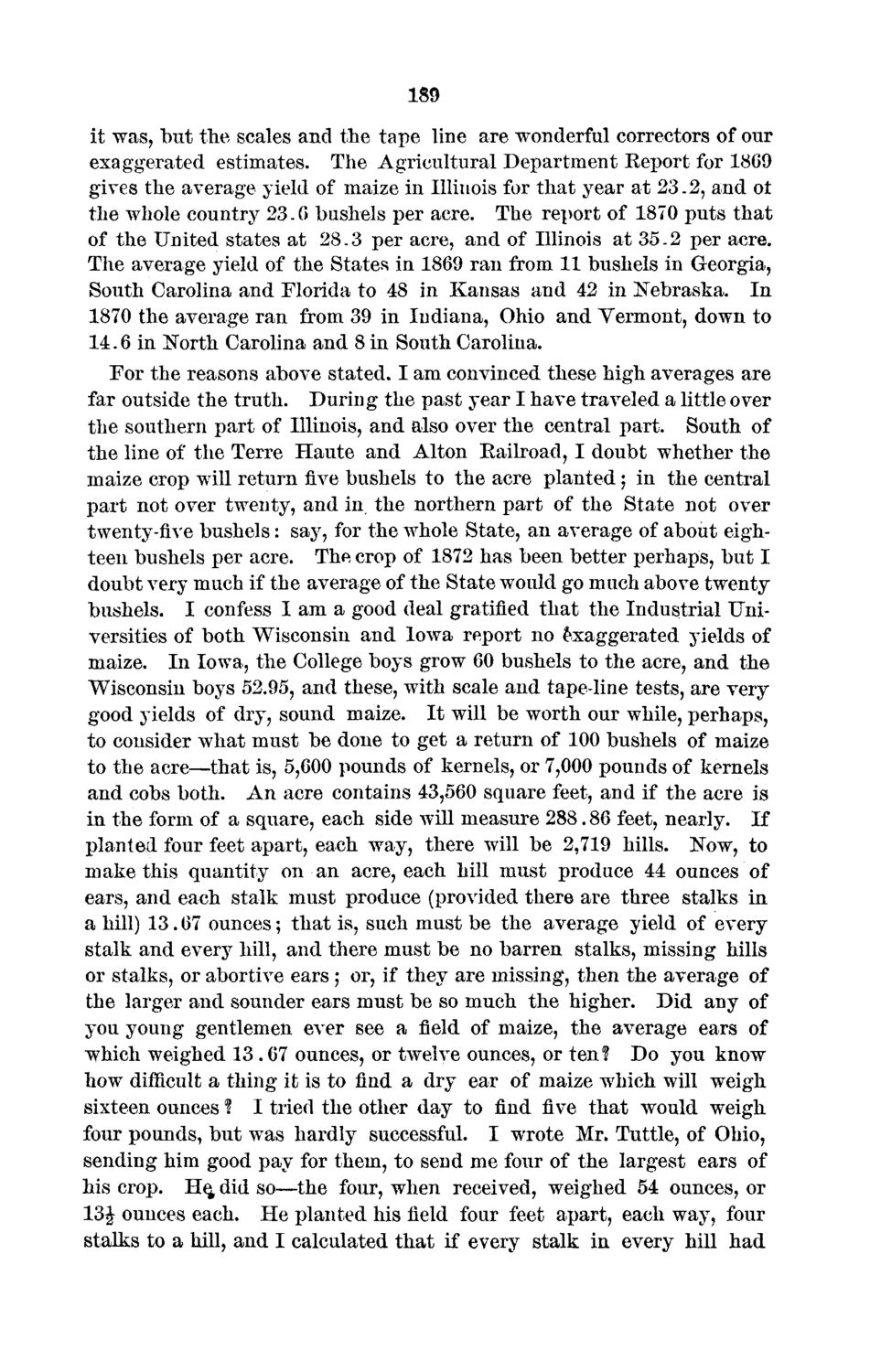| |
| |
Caption: Board of Trustees Minutes - 1872
This is a reduced-resolution page image for fast online browsing.

EXTRACTED TEXT FROM PAGE:
189 it was, but the scales and the tape line are wonderful correctors of our exaggerated estimates. The Agricultural Department Report for 1869 gives the average yield of maize in Illinois for that year at 23.2, and ot the whole country 23.0 bushels per acre. The report of 1870 puts that of the United states at 28.3 per acre, and of Illinois at 35.2 per acre. The average yield of the States in 1869 ran from 11 bushels in Georgia, South Carolina and Florida to 48 in Kansas and 42 in Nebraska. In 1870 the average ran from 39 in Indiana, Ohio and Vermont, down to 14.6 in North Carolina and 8 in South Carolina. For the reasons above stated. I am convinced these high averages are far outside the truth. During the past year I have traveled a little over the southern part of Illinois, and also over the central part. South of the line of the Terre Haute and Alton Railroad, I doubt whether the maize crop will return five bushels to the acre planted; in the central part not over twenty, and in the northern part of the State not over twenty-five bushels: say, for the whole State, an average of about eighteen bushels per acre. The crop of 1872 has been better perhaps, but I doubt very much if the average of the State would go much above twenty bushels. I confess I am a good deal gratified that the Industrial Universities of both Wisconsin and Iowa report no exaggerated yields of maize. In Iowa, the College boys grow 60 bushels to the acre, and the Wisconsin boys 52.95, and these, with scale and tape-line tests, are very good yields of dry, sound maize. It will be worth our while, perhaps, to consider what must be done to get a return of 100 bushels of maize to the acre—that is, 5,600 pounds of kernels, or 7,000 pounds of kernels and cobs both. An acre contains 43,560 square feet, and if the acre is in the form of a square, each side will measure 288.86 feet, nearly. If planted four feet apart, each way, there will be 2,719 hills. Now, to make this quantity on an acre, each hill must produce 44 ounces of ears, and each stalk must produce (provided there are three stalks in a hill) 13.67 ounces; that is, such must be the average yield of every stalk and every hill, and there must be no barren stalks, missing hills or stalks, or abortive ears; or, if they are missing, then the average of the larger and sounder ears must be so much the higher. Did any of you young gentlemen ever see a field of maize, the average ears of which weighed 13.67 ounces, or twelve ounces, or ten? Do you know how difficult a thing it is to find a dry ear of maize which will weigh sixteen ounces ? I tried the other day to find five that would weigh four pounds, but was hardly successful. I wrote Mr. Tuttle, of Ohio, sending him good pay for them, to send me four of the largest ears of his crop. He, did so—the four, when received, weighed 54 ounces, or 13J ounces each. He planted his field four feet apart, each way, four stalks to a hill, and I calculated that if every stalk in every hill had
| |